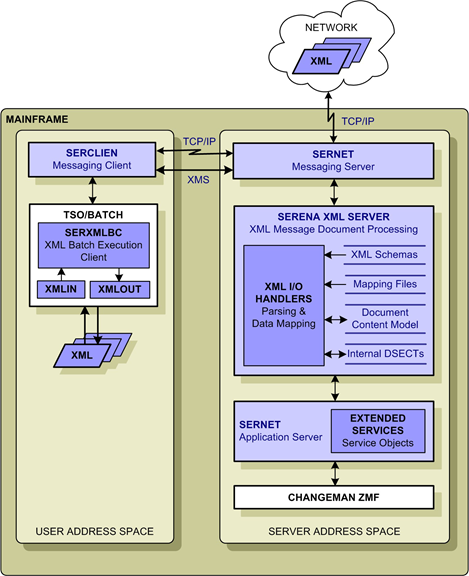Software Architecture
XML Services comprises much more than syntax. It is fully integrated with ChangeMan ZMF and builds on the following architectural keystones:
-
A layered software architecture provides application independence from technology changes in ChangeMan ZMF internals. The low-level “Extended Services” that perform basic ChangeMan ZMF functions are isolated from higher-level interfaces.
-
Modular service objects within the “Extended Services” layer provide a single point of access to ChangeMan ZMF functions. The set of low-level service objects is both comprehensive and extensible.
-
Dynamic client/server messaging uses a shared object-request broker for all ChangeMan ZMF communications. This approach supports asynchronous, stateless, message-based transactions between XML client and server — ideal for network environments and Web-enabled services.
-
A tag-based XML markup language built on industry-standard XML is easily recognized and processed by third-party software. Tag-based markup frees data interchange from bit-offset dependencies and wireline sequence dependencies. It is also inherently extensible, so that custom programs that use the XML Services interface need not be changed when new features or functions are added to ChangeMan ZMF.
-
Developer-friendly SDK clients support COBOL-to-XML, ASSEMBLER-to-XML, and REXX-to-XML API calls as well as interactive XML prototyping.
An overview of the layered XML Services architecture is shown below.
Exhibit 2-1. XML Services Architecture
